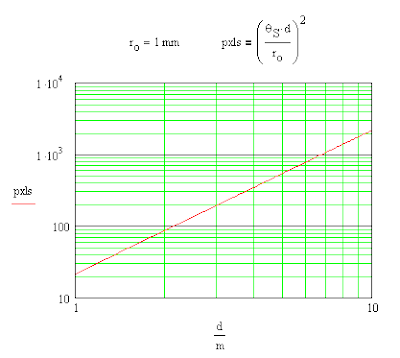For a section of the pinhole image of area dAi the pinhole acts as an optical stop which blocks some of the light from sections of the illuminating object but allows other sections such as area dAo to pass through. The light reaching a point on the screen is the sum of the areas passing through and one can apply the laws of photometry to determine the illuminance of a portion of the image.

The quality of the image depends on the relative angular size of the pinhole at the image point and if the distance of the screen, d, is much larger than the radius of the pinhole the angular size is approximately θ = 2r/d. One has to compare this value with the angular size of an actual object in the field of view to determine how detailed its image will be.
Supplemental (Mar 24): I did a plot of the number of pixels for an image of the Sun:

One can see that ro/d severely limits the image resolution for a pinhole camera.
No comments:
Post a Comment